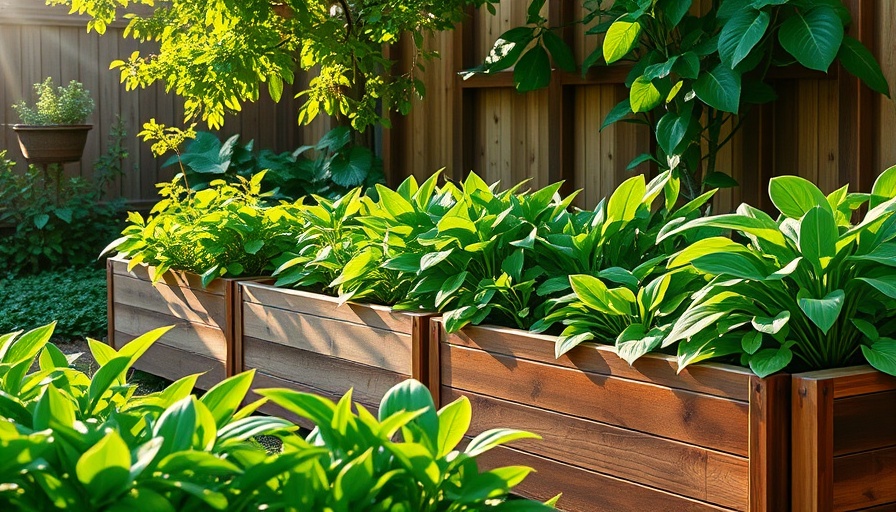
Transform Your Outdoor Space with Easy Backyard Landscape Designs
Creating an inviting and beautiful backyard doesn't need to break the bank or require countless hours of labor. With a few simple and cost-effective landscaping ideas, you can revitalize your outdoor space without the stress of complex projects. From colorful gardens to relaxing water features, here are some straightforward options to elevate your backyard.
Embrace Nature: Plant Colorful Flowers and Shrubs
One of the simplest ways to enhance your backyard is by incorporating colorful flowers and lush greenery. Native plants are particularly advantageous as they thrive in your local climate, requiring minimal maintenance. A well-planned flower bed can add visual appeal and attract pollinators like bees and butterflies, transforming your yard into a vibrant ecosystem. Plants such as lavender, daylilies, and coneflowers not only offer beauty but also have aromatic qualities that make your space enjoyable for gatherings.
Add a Soothing Water Feature for Unmatched Relaxation
The calming sound of water flowing can turn your backyard into a serene retreat. Water features are among the easiest additions to your landscape that provide aesthetic charm and tranquility. Here are three simple options to consider:
1. Container Fountain: Use a decorative pot to create a small fountain. By adding a submersible pump and some rocks for decoration, you can have bubbling water without extensive plumbing work.
2. Bird Bath Fountain: Combine aesthetics with a bird-friendly feature by adding a solar-powered pump to a bird bath. Not only does this beautify your space, but it also attracts delightful birds.
3. Pondless Waterfall: If you prefer not having a pond, a pondless waterfall can provide that natural water sound and look through a carefully designed rock formation.
Low Maintenance: Gardening with Purpose
For busy homeowners, maintaining a beautiful landscape often feels daunting. The key to an easy-to-care-for garden is to select plants that suit your environment and to incorporate mulch, which reduces weed growth and conserves moisture. Perennials require less effort than annuals and return year after year with minimal intervention, making them a wise choice for effortless beauty. Pair them with decorative stones or gravel paths to delineate areas without the hassle of mowing grass.
Functional Outdoor Spaces: Create Inviting Seating Areas
Silence is golden, but so is a good conversation. Adding a leisure space equipped with comfortable seating can transform not just the aesthetics but also the functionality of your backyard. Whether you opt for a simple picnic table or a curated patio lounge with cushions, these spaces encourage family gatherings, entertaining guests, or simply enjoying the fresh air. Shade structures, like pergolas or umbrellas, can enhance these areas, allowing for comfort throughout the day.
Tap Into DIY Spirit: Mixing Creativity and Functionality
DIY enthusiasts will find that backyard landscaping allows for personal expression. Incorporating repurposed materials—like using old pallets for seating or design feature—adds a unique charm and reduces costs. Garden art made from found objects or affordable DIY projects can elevate the flair of any space while showcasing your creativity.
Consider Local Flora and Fauna: A Sustainable Approach
Opting for native plants not only enhances your backyard's beauty but also supports the local ecosystem. Plants that are indigenous to your region will be better adapted to the climate and conditions, meaning less watering and fertilizer are required. This sustainable approach is not only eco-friendly but also ensures a lower maintenance overhead.
Conclusion: Make the Most of Your Outdoor Experience
Whether you have a small balcony or a sprawling backyard, innovative landscaping designs can significantly enhance your outdoor experience. By incorporating these straightforward ideas—such as planting native flowers, adding water features, or creating inviting spaces—you tap into the potential of your outdoor environment. Dive into these projects with a DIY mindset, and enjoy the process of turning your backyard into an oasis.
Explore the possibilities today and imagine the joy of hosting friends or simply lounging in the tranquility of your revamped backyard!
 Add Row
Add Row  Add
Add 




Write A Comment